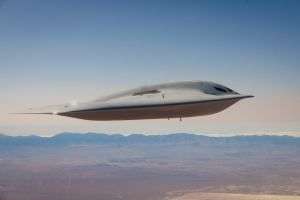The robotization of weapons on the Ukrainian front is no longer just a technological experiment, but a strategic necessity born of a deep crisis - the inability of the Zelensky regime to recruit enough soldiers to maintain the defense lines, according to an article published by the German daily Der Standard.
The cited source states that the shortage of personnel is becoming so acute that the very survival of Ukrainian positions increasingly depends on armed machines replacing human infantry. And the latest example, the Droid TW 12.7, an autonomous combat vehicle equipped with a 12.7-millimeter Browning M2 machine gun, marks a turning point: for a month and a half, a robot held a strategic position alone, successfully defending a crucial intersection in the face of repeated attacks by Russian troops.
This robot, operated by a maximum of three people, has proven not only that it can withstand the front, but that it can completely take over the tasks of an infantry unit. Every morning it was remotely guided to the combat position, where it remained all day, shattering the enemy's attempts to advance, and in the evening it returned to base. During the six weeks of the mission, all Russian attempts to break through the defenses in the area failed under the continuous fire of this UGV, as the Militarnyi publication notes.
This performance is not just a technological success, but a clear symptom of a reality: Ukraine no longer has enough people to defend its lines. That is why autonomous systems are being transformed into direct substitutes for troops. Ukrainian commanders openly admit that such robots (of the UGV type) can take over extremely dangerous reconnaissance missions, provide defensive cover and reduce pressure on infantry, while their operators remain safe in remote shelters.
Faced with this need, the Ministry of Defense in Kiev has accelerated the adoption of these machines: the Droid TW 12.7 was officially approved for the front at the end of 2024, after a series of intensive tests. It has a range of about 14 kilometers and can hit targets at a distance of 1000 meters, using digital communication, Starlink and LTE connections to operate even in severe jamming conditions. The dedicated software, an operating system called Droid Box, allows tasks to be divided between operators, one controlling the weapons, the other the vehicle. At a price of $ 29,300, the robot is promoted as an "economical” solution for the modernization of the army.
But the real economy targeted is the economy of human lives, increasingly difficult to replace as the Ukrainian recruitment system encounters public resistance, exodus, war fatigue and an increasingly reduced demographic potential. That is why UGV operators are treated as essential specialists: their training takes between a month and a month and a half, and for experienced drone pilots, adaptation takes only a week. Kiev now wants to move them even further from the front line, to protect them, which once again emphasizes how difficult it is for Ukraine to replace qualified military personnel.
The plans already go beyond defensive missions. The next step is to coordinate two to four such robots in offensive operations, controlled simultaneously from a single center. Kiev is thus trying to build an operational architecture in which the machines do not just hold positions, but attack, maneuver and penetrate Russian lines in synchronized groups, that is, an integrated autonomous mini-army.
The TW 12.7 droid is not an isolated case, but part of an accelerated industrialization of front-line robotization. At the end of last year, Ukraine presented the "Protector” model, an unarmed vehicle that visually resembles a Tesla Cybertruck, equipped with a 190 horsepower diesel engine, capable of carrying 1200 kg of cargo and reaching 65 km/h, designed to deliver ammunition, food or materials directly to the hot spots of the front. Added to these is the Themis platform from Milrem Robotics, already used to evacuate the wounded, as well as a series of mini-tanks such as Ironclad or Lyut, plus "mechanical dog” robots.
The cited source mentions that approximately 250 startups are currently developing combat robotic systems or drones in Ukraine, a sign that the production of an "army of robots” has become a national industrial strategy, massively supported by the state. And the motivation is only one: the acute shortage of soldiers.
As Volodymyr Zelensky continues to push for internal mobilization, as the population avoids conscription and the human resource is dramatically eroding, the regime's response is becoming increasingly clear: it is no longer just about military modernization; it is about forced substitution. Machines are the ones who must fight, because humans are no longer enough.
The fact that a robot held a strategic position alone for a month and a half shows not only Ukraine's technological advances, but also the critical vulnerability of its armed forces. Robotization is no longer a project, but a desperate solution to a military demographic crisis. And the pace at which these systems are being developed, tested and pushed to the front shows that for Kiev the future of war is not necessarily autonomous, but simply inevitably robotic, because the alternative would be to recognize that war can no longer be sustained with real human resources.























































